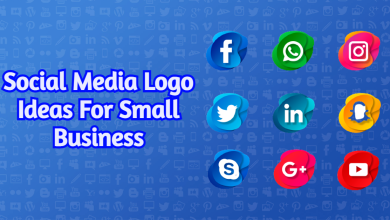Are you looking for ways to skyrocket referral traffic to your website? Do you want to establish brand awareness and authority using high-quality content? Wouldn’t it be great if you could boost your website’s search engine rankings with genuine backlinks from high-authority websites with B2B link building.
If your answer to these questions is a thunderous “yes,” it’s high time you start working on a strong B2B link-building strategy. In the following sections, we’ll outline a few B2B link-building strategies that’ll work for your company in 2025.
B2B Link Building: Why It’s Important
Genuine, high-quality backlinks from authoritative websites play a key role in boosting your reach and website traffic. Also, they help generate leads and drive conversions in the long run.
But B2B link building isn’t as simple as publishing guest posts on a few established websites. It requires a concerted effort to reinforce your authority and build long-standing connections with your industry’s journalists, bloggers, content creators, and influencers.
It emphasizes the importance of working with an experienced B2B content marketing agency. The right B2B content marketing agency will help you understand your target audience and outline a robust content strategy.
Whether you’re looking to create guest posts, infographics, case studies, or industry reports, the expertise of a B2B content marketing agency will come in handy. Once you start creating outstanding content, you can use various tactics to attract quality backlinks to your website.
<br><strong>Do You Know?</strong><br>
If you think link building is old-school, think again. It has evolved and adapted to become a cornerstone of any successful SEO campaign. The way to building authoritative and relevant links is crucial for website’s domain authority and driving traffic that converts.
1. Reclaim Brand Mentions
If your company has existed for a while, other websites and online publications might have written about your brand or products. You can leverage those branded mentions by reaching out to the website admins or authors and requesting them to add a backlink to your website.
Start by identifying your brand mentions with the following Google search query – {brand name} + {website.com}. The next step is to go through each search result to find out whether there’s an opportunity for link-building.
Focus on using uncredited brand name mentions in blog posts, news articles, and other types of published content. Reach out to the author or creator of the original content with a link to your website, blog, or product pages.
It’s a good idea to set up Google Alerts for your company name. It’ll ensure you’re up to speed on every brand mention and help you convert every citation into a backlink. Besides boosting search engine rankings, reclaiming branded mentions will reinforce your brand authority and online reputation.
It’s particularly crucial, considering that B2B buyers spend nearly 27% of their time conducting online research before purchasing.
2. Build Relationships through Social Media Engagement
In the B2B world, social media isn’t just about sharing memes or posting product updates; it’s a powerful platform for building professional relationships that lead to long-term benefits, including backlinks.
a) Identifying B2B Influencers on LinkedIn
LinkedIn has solidified its position as the premier social network for B2B marketing. Unlike X or Instagram, which are broader in their audience reach, LinkedIn provides to professionals actively seeking knowledge, partnerships, and opportunities.
Start by identifying influencers and thought leaders in your niche. These are individuals with a robust network, consistent content output, and a reputation for expertise. Use LinkedIn’s search filters to find them based on industry, location, or job titles.
Engagement is key. Follow their posts, leave insightful comments, and share their content with your own added perspective. This builds familiarity and trust over time. Avoid generic responses like “Great post!” Instead, offer a specific compliment or ask a thought-provoking question.
b) Effective Outreach Techniques for Connection Requests
When sending connection requests, skip the default LinkedIn template. People are more likely to accept requests when you personalize your message. Reference something they’ve written, a mutual connection, or a recent achievement they’ve shared.
Example:
“Hi [Name], I really enjoyed your recent article on [topic]—especially your point about [specific insight]. I’d love to connect and explore how we can collaborate on [related topic or interest].”
This approach shows genuine interest and sets the stage for future communication.
Follow up on accepted connection requests with a warm message thanking them for connecting. Don’t immediately pitch or request something—it’s like asking a stranger for a favor right after shaking their hand. Build the relationship first.
c) Using Data-Driven Content to Initiate Conversations
Data is like currency in the professional world—everyone needs it, and the more unique it is, the more valuable. Sharing original research, survey results, or industry insights can spark conversations with influencers or businesses interested in your findings.
Post a snippet of your data on LinkedIn or X, tagging relevant influencers or companies who might find it useful. For example:
“Our latest research shows that 67% of B2B marketers prioritize content collaborations in 2025. How are you leveraging partnerships in your strategy, [tagged influencer]?“
This approach invites discussion and positions your brand as a thought leader. Further, others will reference and link to your content in their own posts or articles.
3. Develop a Resource-Driven Link Strategy
Building a resource-driven link strategy means creating content so valuable and authoritative that others naturally want to link to it. Resources like comprehensive guides, tools, or visual content (like infographics) attract backlinks because they serve as references for other creators. Here’s how you can implement this strategy step-by-step:
a) Building Authoritative Resource Pages
Resource pages are curated collections of information on a specific topic. These might include articles, tools, templates, or tutorials that users in your industry find useful. Think of them as “go-to” guides for anyone looking for reliable information in your field.
Below are some steps to create a great resource page:
1. Focus on topics that align with your business and are frequently searched by your target audience. Use tools like Google Trends, SEMrush, or Ahrefs to identify high-demand topics.
Example:
- A SaaS company could create a “Best Task Management Software Tools” page.
- A marketing agency might craft “Most Common Digital Marketing Terms You Should Know – Marketing Glossary.”
2. Research and compile content that adds value. This might include:
- Links to tools or calculators
- Articles or whitepapers
- Video tutorials or webinars
3. Use clear headings, subheadings, and categories to make your resource page user-friendly. If it’s hard to skim, users—and potential linkers—will lose interest.
4. Outdated information kills credibility. Regularly refresh your resource page with new data, tools, or trends to maintain its authority.
b) Using Infographics and Whitepapers to Attract Links
Infographics and whitepapers are among the most shareable forms of content. They condense complex data into easily digestible visuals or detailed, in-depth explanations. This makes them highly appealing to blogs, journalists, and industry websites looking for credible sources to cite.
- Conduct surveys or analyze trends in your industry to generate exclusive insights. Unique information is far more likely to be cited and shared.
- A professionally designed infographic grabs attention. Use tools like Canva, Adobe Illustrator, or hire a graphic designer to ensure your visuals are polished and appealing.
- Share your infographic on platforms like Pinterest, LinkedIn, and relevant forums. Reach out to niche bloggers or websites – offer them the visual as a free resource they can use (with credit back to your site).
Example Outreach Email:
Hi [Name],
I noticed your recent article on [topic] and thought your readers might find our new infographic on [related topic] helpful. Feel free to include it in your post if you think it’s relevant. Of course, we’d appreciate a mention with a link back to our original source!
c) Targeting Long-Tail Keyword Opportunities
Long-tail keywords are specific search terms with lower competition but high intent. For example, instead of targeting “digital marketing,” a long-tail variation would be “best digital marketing strategies for startups in 2025.” These keywords often align with niche searches that naturally attract backlinks from blogs, forums, and other sites answering those exact queries.
- Use tools like Ahrefs, SEMrush, or Google Keyword Planner to find long-tail keywords relevant to your industry. Look for phrases with moderate search volume but low difficulty.
- Develop articles, case studies, or tutorials that specifically address these long-tail searches. Keep the content detailed and actionable to increase its usefulness and shareability.
Example Topics:
- “10 Best PRM Software for Businesses in 2025“
- “Best eCommerce Tools to Build and Grow an Online Store“
Interlink Within Your Website
Link your long-tail content to other resources on your site, like blog posts or resource pages. This strengthens your site’s overall SEO while providing users with a seamless experience.
3. Sponsor Industry Conferences
Conference sponsorships provide you with numerous opportunities for link building and networking. All you have to do is find relevant industry conferences to attract your target audience. Request the organizers to add your company logo and website URL on the conference’s web page.
Besides attracting backlinks, sponsoring conferences is an excellent way to get in front of target buyers and position your brand as an industry authority. Also, it’ll help you grab the attention of bloggers and journalists and forge a long-term relationship with them.
5. Relationship Building Over Transactional Linking
A good partnership isn’t a one-and-done deal. Focus on building long-term relationships where both parties benefit—think shared content, webinars, or joint events.
Face-to-face interactions at trade shows and conferences often lead to collaborative opportunities, including link-building potential. Don’t overlook the power of a good handshake and chat.
Keep your network in the loop with updates about your business, content, or projects. It ensures you stay top-of-mind when link opportunities arise. I have listed some steps in the below section to help you get most out of this.
1. Look for businesses in your industry or a related field that target a similar audience but aren’t direct competitors. For instance:
- A B2B CRM software provider could partner with a marketing automation platform.
- A logistics company might collaborate with a supply chain analytics firm.
2. Don’t approach potential partners with an immediate ask. Instead, offer something valuable upfront, like:
- Featuring them in your blog or resource page.
- Sharing their content on your social media platforms.
- Inviting them to co-host a webinar or event.
Example Outreach Email:
Hi [Name],
I’ve been following [their company/blog/product] for a while, and I’m impressed by your work on [specific project or content]. I think our audiences could benefit from a collaboration, like a joint webinar or a co-written guide on [topic]. Let me know if this interests you—I’d love to discuss it further.
3. Collaborations, like guest articles, co-authored whitepapers, or podcasts, provide opportunities for both businesses to gain backlinks, share audiences, and build credibility.
Conclusion
There’s more to B2B link building than publishing guest posts and harnessing broken link opportunities. If you want to maximize high-quality backlinks, start by working with a B2B content marketing agency to create outstanding content.
Next, use platforms like HARO to connect with established journalists in your industry and build a relationship with them. Keep an eye out for uncredited brand mentions, and sponsor relevant industry conferences to boost brand authority further while earning backlinks.





